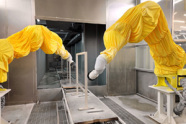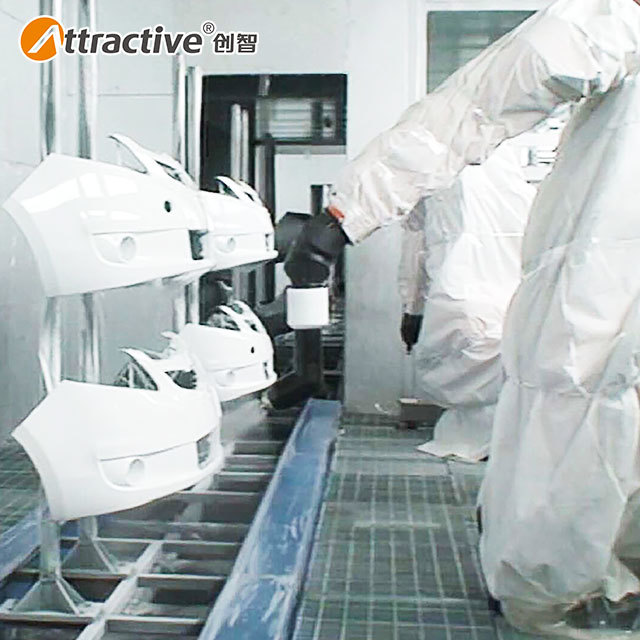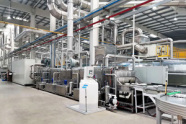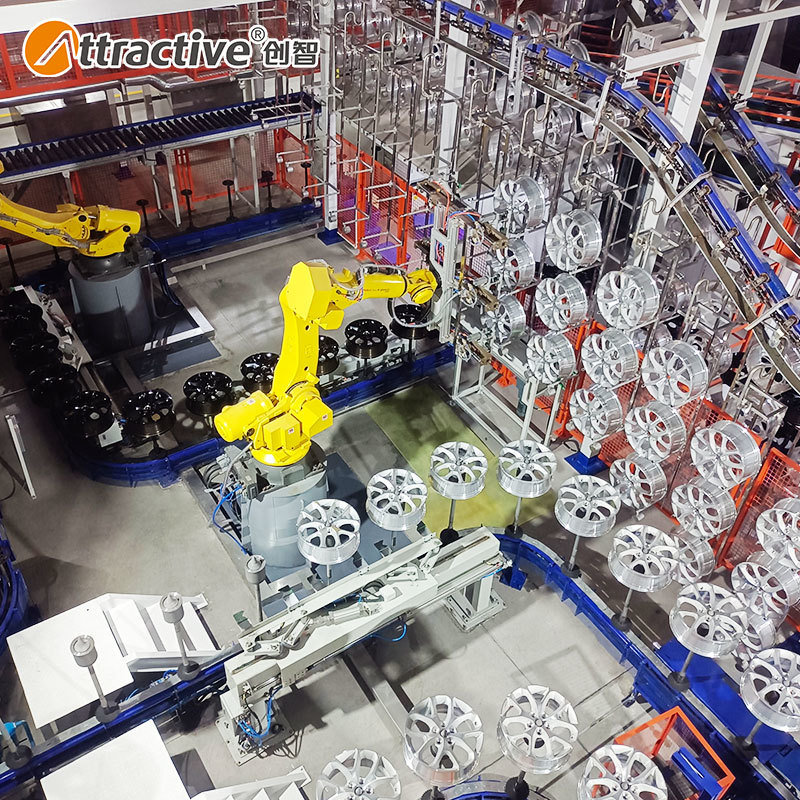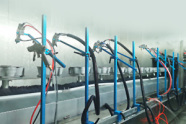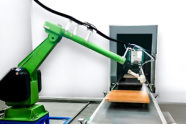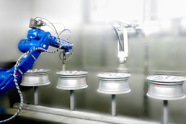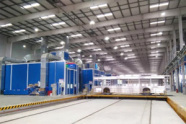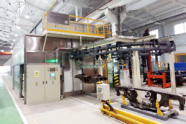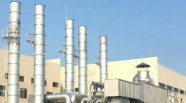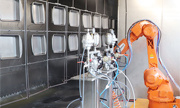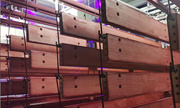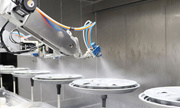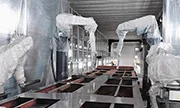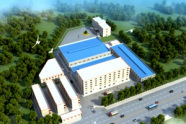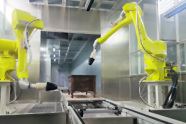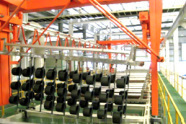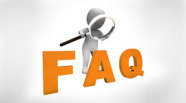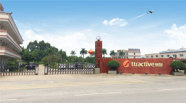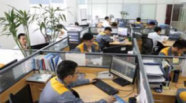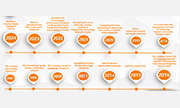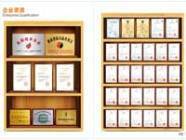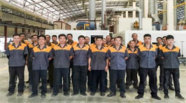Related News
31
2025
-
10
Customized Coating Line Design for Specific Production Needs
Author:
Chuangzhi Coating
In the industrial coating field, no two production lines are exactly the same—automotive parts factories need high-efficiency spraying lines that can handle 500 workpieces per hour, while high-end furniture factories require flexible production lines adapted to multiple materials and color numbers, and small hardware enterprises focus more on cost-effective configurations in compact spaces. Standardized coating lines often lead to capacity waste of "using a big horse to pull a small cart" or efficiency bottlenecks of "using a small horse to pull a big cart" due to fixed parameters and rigid layouts. As a professional coating line equipment manufacturer, we focus on customized coating line design, and by deeply analyzing customers' production needs, we create solutions that are completely adapted from equipment combination to process logic, making each coating line an exclusive system "born for production needs".
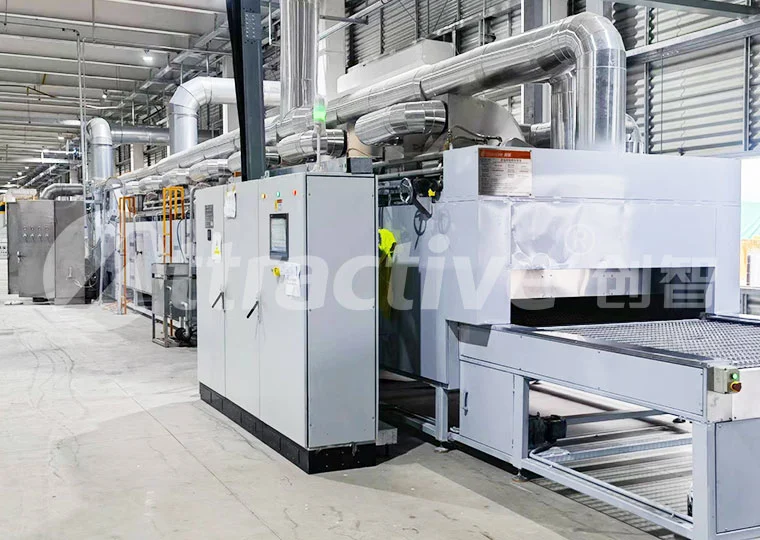
1. Customization by Production Scale: Precise Matching from "Small-Batch Trial Production" to "Large-Scale Mass Production"
Production capacity difference is the primary consideration for customized design. Production demand adaptation solutions balance efficiency and cost through modular configuration:
- Small-batch multi-variety scenarios (such as precision instrument parts): Adopt a compact design of "single-station spraying + manual loading and unloading", equipped with quickly replaceable spray gun components and small curing ovens, with floor space controlled within 50㎡. It supports 8-10 changeovers per day, with color change time ≤15 minutes, meeting the multi-batch trial production needs of R&D-oriented enterprises;
- Medium-batch standardized scenarios (such as home appliance panels): Design a "dual-track conveying + automatic spraying" system. The pretreatment tank and spraying booth are arranged in series, equipped with 2 6-axis robots for regional operation, with a stable hourly capacity of 200-300 pieces, and coating thickness deviation controlled within ±3μm, balancing efficiency and consistency;
- Large-scale mass production scenarios (such as automotive wheels): Build an automated production line with "multi-process parallel + intelligent scheduling", integrating automatic loading and unloading, online detection, and NG product diversion functions. Through the MES system, it dynamically distributes robot loads, achieving stable output of more than 500 pieces per hour, with overall equipment efficiency (OEE) reaching over 90%.
A kitchen appliance enterprise improved the capacity utilization rate of its original standardized line from 60% to 92% and reduced unit energy consumption by 28% through customized design.
2. Customization by Process Characteristics: Exclusive Solutions for Adapting to Materials and Coatings
Different workpiece materials (metal, plastic, wood) and coating types (powder, liquid, UV) have special requirements for equipment. Customized coating line design achieves precise adaptation through process detail optimization:
- Anti-corrosion coating for metal parts: For the high salt spray resistance requirements of automotive chassis parts, customize a three-layer process line of "zinc phosphating + electrophoresis + powder spraying". The pretreatment tank is made of PVC for corrosion resistance, and the curing oven temperature is precisely controlled at 180±2℃ to ensure the coating's salt spray resistance reaches 1000 hours;
- Decorative coating for plastic parts: Design a "dust-free spraying + UV curing" system for ABS workpieces such as mobile phone cases. The spraying booth has a cleanliness level of Class 1000, equipped with electrostatic cup spray guns (atomization particle size 10-15μm), combined with LED-UV curing lamps (energy density 800mJ/cm²), achieving both mirror effect and 3H hardness;
- Environmental protection coating for wood parts: For water-based paint spraying of solid wood furniture, customize a "constant temperature and humidity spraying booth + infrared leveling" process, stabilizing environmental humidity at 55±5% to avoid sagging or bubbles of water-based paint. At the same time, integrate a VOCs catalytic combustion device, with emissions ≤20mg/m³, meeting environmental protection standards in the furniture industry.
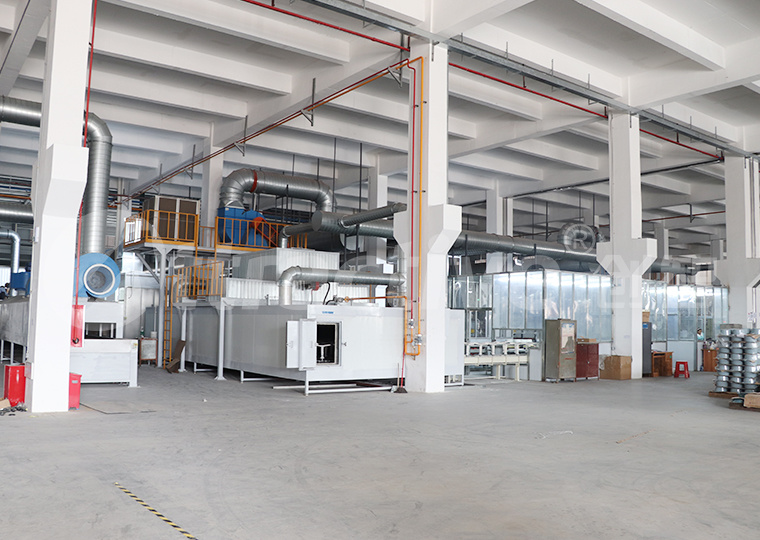
3. Customization by Space and Environmental Protection Needs: Breaking Through Site Restrictions and Policy Requirements
Customers' workshop space and local environmental protection policies often become key constraints for coating line implementation. Flexible coating systems break through restrictions through innovative design:
- Small space adaptation: Adopt a "three-dimensional layout" for old factory renovation projects, superimposing pretreatment, spraying, and curing links in layers, achieving the production capacity of a traditional 300㎡ line in a 200㎡ workshop. The conveying system adopts a 90° turn design to adapt to irregular site shapes;
- Ultra-low emission transformation: For areas with strict environmental protection, customize a full-process environmental protection system of "powder recovery + paint mist purification + waste gas treatment". The powder recovery rate is increased to 98%, paint mist capture rate reaches 99%, and after "activated carbon adsorption + RTO incineration" treatment, non-methane total hydrocarbons emission is ≤30mg/m³, successfully passing EIA acceptance;
- Multi-floor cross-regional design: Customize a "vertical conveying + layered operation" scheme for high-rise building workshops, connecting process sections on different floors through elevator-type conveying devices, achieving continuous operation of the entire coating process under the premise of meeting load-bearing requirements.
4. Full Process of Customized Services: From Demand Research to Commissioning and Operation
The core value of customized coating line design lies not only in the equipment itself but also in in-depth services throughout the cycle:
- Preliminary diagnosis: The technical team goes deep into the customer's workshop to collect workpiece parameters (size, material, production capacity), site data (area, floor height, load-bearing), and environmental protection requirements (local standards, emission indicators), outputting a "Demand Analysis Report" and 3D layout simulation plan;
- Scheme optimization: Adjust equipment configuration according to customer feedback, such as increasing the number of robots to improve production capacity or reducing tank size to adapt to space, simulating the production process through digital twin technology to identify and optimize bottlenecks in advance;
- Delivery guarantee: Provide one-stop services of "installation-commissioning-training", dispatch engineers to be stationed on-site for 30 days to ensure equipment linkage accuracy and process parameters meet standards, and train the operation team to master daily maintenance and parameter adjustment skills;
- Continuous upgrading: Reserve equipment upgrade interfaces to support later addition of detection modules or capacity expansion, cooperating with customers' business growth to achieve dynamic adaptation of the coating line.
Conclusion
The essence of customized coating line design is to make equipment serve production needs rather than make production adapt to equipment. Through the three-dimensional collaboration of customized coating line design, production demand adaptation solutions and flexible coating systems, we have created exclusive production lines for more than 300 customers, covering 15 sub-industries. Data shows that customized solutions help customers increase coating efficiency by 35% on average, reduce energy consumption by 25%, and reduce rework rate by 40%. If you are facing problems such as mismatched production capacity, substandard processes, or limited space, a customized coating line will be a key solution to solve production pain points.


